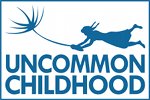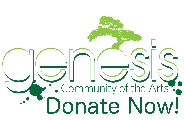A Horse Ride Through A Coffee Finca
March 10, 2010 in Guatemala, North America, Travelogue
The view from the side of Volcan San Pedro is breathtaking. Sitting on a horse on a tiny foot path, nine kilometers out of town on the trail to Santiago it truly feels like time has run backwards and perhaps we are the first to look out over this ultramarine jewel. The children were beyond excited at the prospect of a four hour horse trek through a coffee finca and up the side of the volcano. I worried about Elisha’s finger and admonished him to keep it from banging around and ride slowly.
The horses were a dismal site. “These guys would be turned in to the animal treatment police at home,” I whispered to Tony. Except for the young, fiesty mount that Hannah got, the rest were, optimistically, old nags. Their mangy hides hung over equally mangy carcasses. In spite of this, they seemed in rather good spirits were happy enough to trot off along the trail. The road wound up and up, out of the town of San Pedro and through the cultivated forests toward the coffee finca. “These trees are avacadoes,” pointed out our guide, and this is a tree we use for an oil that we squeeze out of the fruits.” I made note. The kids were more interested in their horses.
I’ve been reading I, Rigoberta Menchu, the story of an indigenous Guatemalan woman who became a political activist after watching much of her family die at the hands of the government. I thought about the way she recounted her experiences as a small child working in the coffee fincas, picking beans for long hot hours, a month at a time and then returning home with almost nothing for her efforts. Coffee beans grow on the tiniest twigs of a coffee bush, hanging almost the way the gooseberries do in my Dad’s garden. They must be picked very carefully, when they are red. The twigs break easily and if they’re broken then they can’t produce more coffee. Our guide showed us how they pick, never bending the branch, moving carefully around each twig, picking slowly with two fingers. I popped open one of the red berries and showed the kids the two pale green raw beans, coated with slime. “Two beans in each berry, children. Think of how many beans are in Dad’s kilo of coffee and how long that would take to pick!” They nodded, appreciating the effort.
We had seen coffee drying on tarps around town and we’d watched some men washing the green beans as we walked to the horse corral in the morning. The guide explained that it was then bagged and shipped off green to be roasted somewhere else and that is what made it taste like coffee, the roasting. “Is coffee expensive?” Asked Hannah. “Well, some of it is,” I explained. “It’s a little bit like the olive oil we learned about in Tunisia, all of the work is done by hand and it’s hard work and takes a long time, so when you find cheap olive oil, or cheap coffee, what that usually means is that the people at the bottom, the pickers, aren’t being paid enough. Sometimes they’re even treated badly and not fed well. That’s why we don’t buy cheap coffee or olive oil.” “There is something called “fair trade” for things like coffee and other things that are hand made,” explained Tony, “It means that all of the workers, all the way along the line, get paid a fair wage in their country for their work. We try to buy things that are fair trade whenever we can because that way we’re supporting businesses who are treating the laborers right and it is better for us to do without some things than it is to buy cheap things that exploit other people.” The kids nodded, thinking about this. Ezra brings up the Tunisians again, “I think coffee and olives are the same in some ways, it’s hard work in the sun and your fingers get tired.”
Truthfully, I could have done with about two hours on the horse. These mountain nags were happy to trot roughly along but seemed unaware that they could stretch their legs out just a little further and canter smoothly, which would have made the ride easier on my backside. I was reminded of Hannah’s comment following a camel ride last winter, “My thigh pits hurt!” Four hours on horseback over rough mountain trails made my thigh pits hurt too. We stopped often to look out over impossibly idyllic cliffs and to wade in the crisp, cool water on an abandoned beach. It couldn’t have been a nicer day.
Of course, no perfect day is without incident for us. Riding down the steep, dirt roads through the outskirts of San Pedro, I heard an ominous “CRACK!” behind me. Since all four kids were accounted for ahead of me, I turned to check on Tony. He was surrounded by little mayan women prattling in their dialect with our guide, who was stooped over pulling pieces of something white out of the ground: the water pipe. Tony’s horse, in picking its way down the treacherous slope managed to step on the main water pipe running into the puebla (which, logically, was laying an inch beneath the surface of the ‘road’). The women were obviously miffed. The guide didn’t seem that worried. “Is there some way for us to pay for the damage, to have that pipe repaired?” I asked him later. “No problem,” he replied in customary fashion, “I will talk to the Cap-ee-tan, but I think this is no problem, some guys will fix it.” So far he’s been by to say hello and return a water bottle one of the kids left clipped to a horse, but not a word has been mentioned about the pipe.






 RSS - Posts
RSS - Posts


























What a great lesson for us all. Thanks, Jenn!